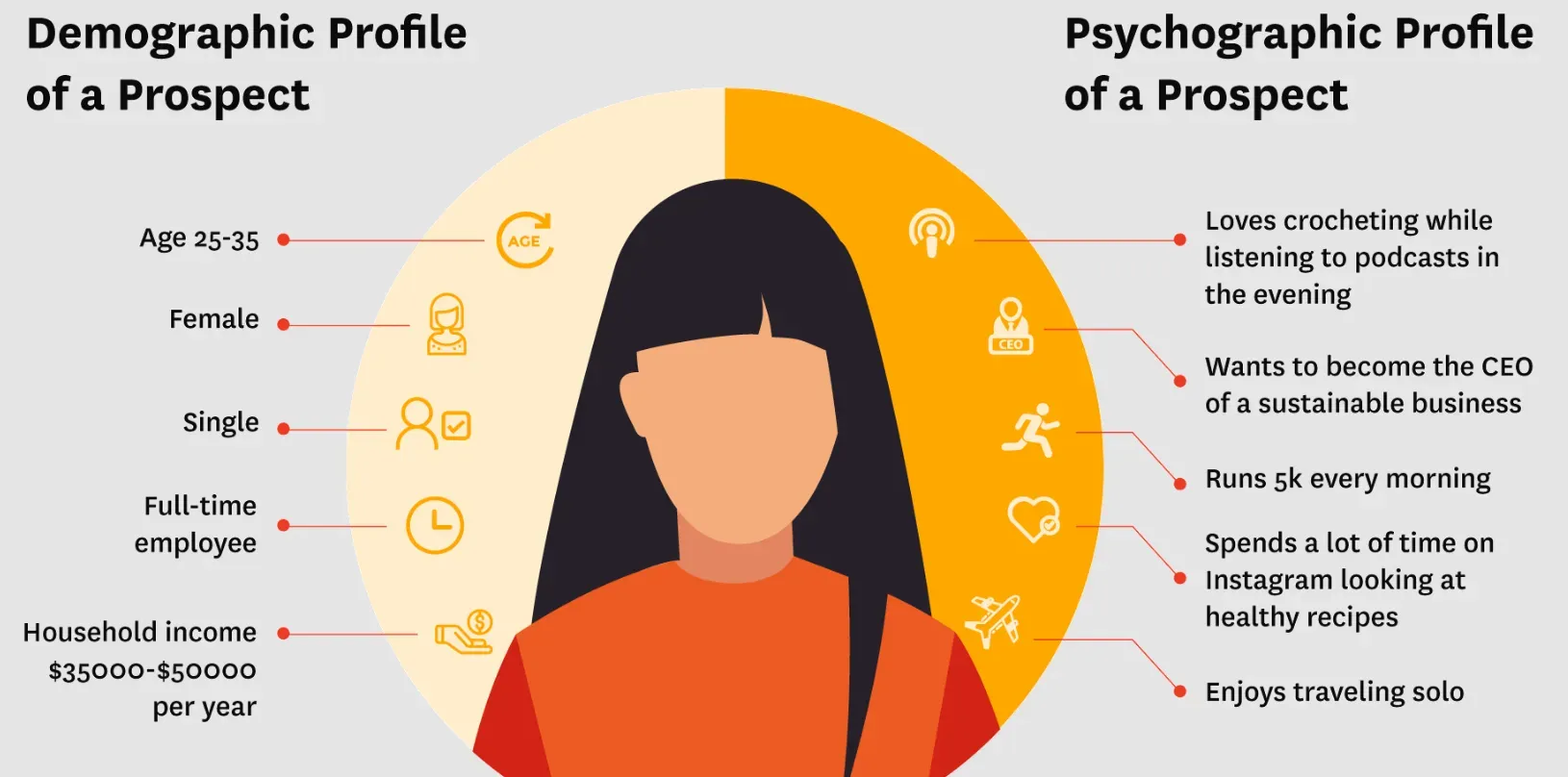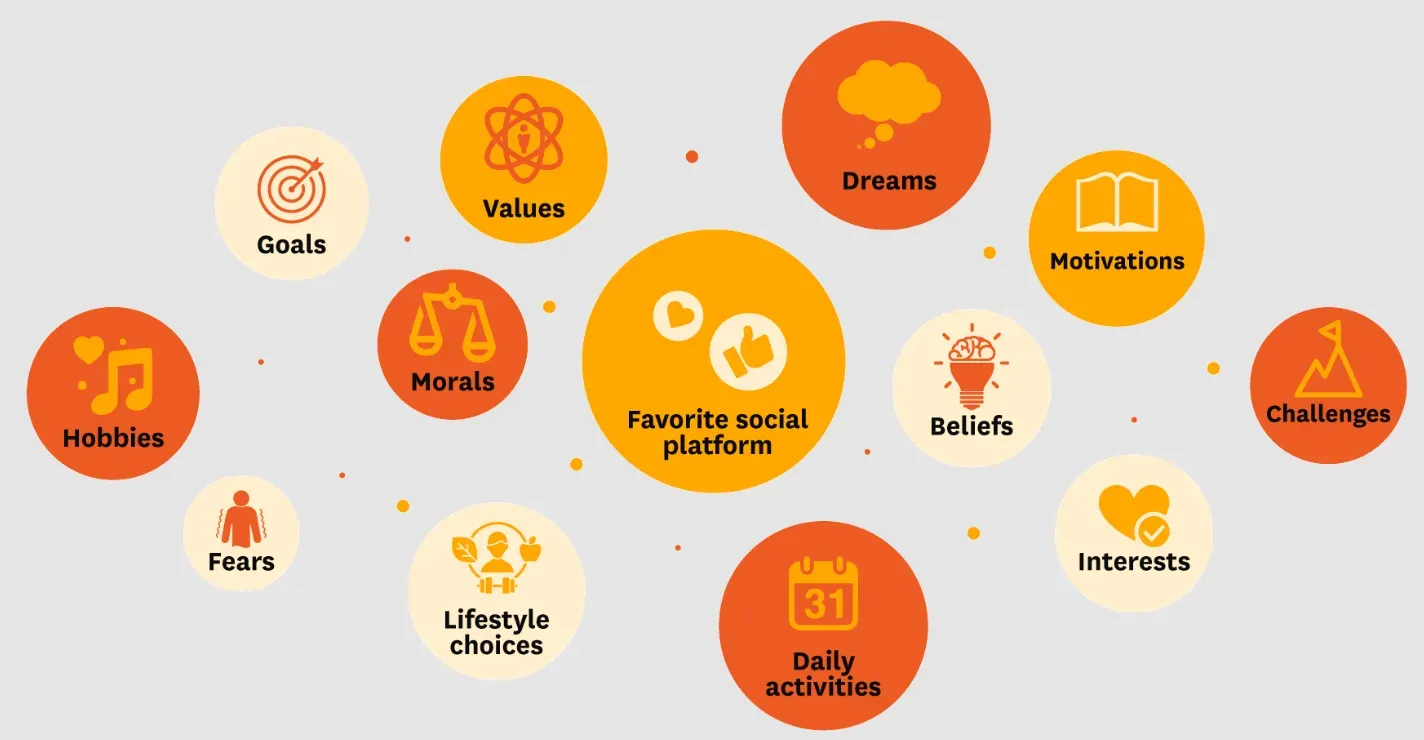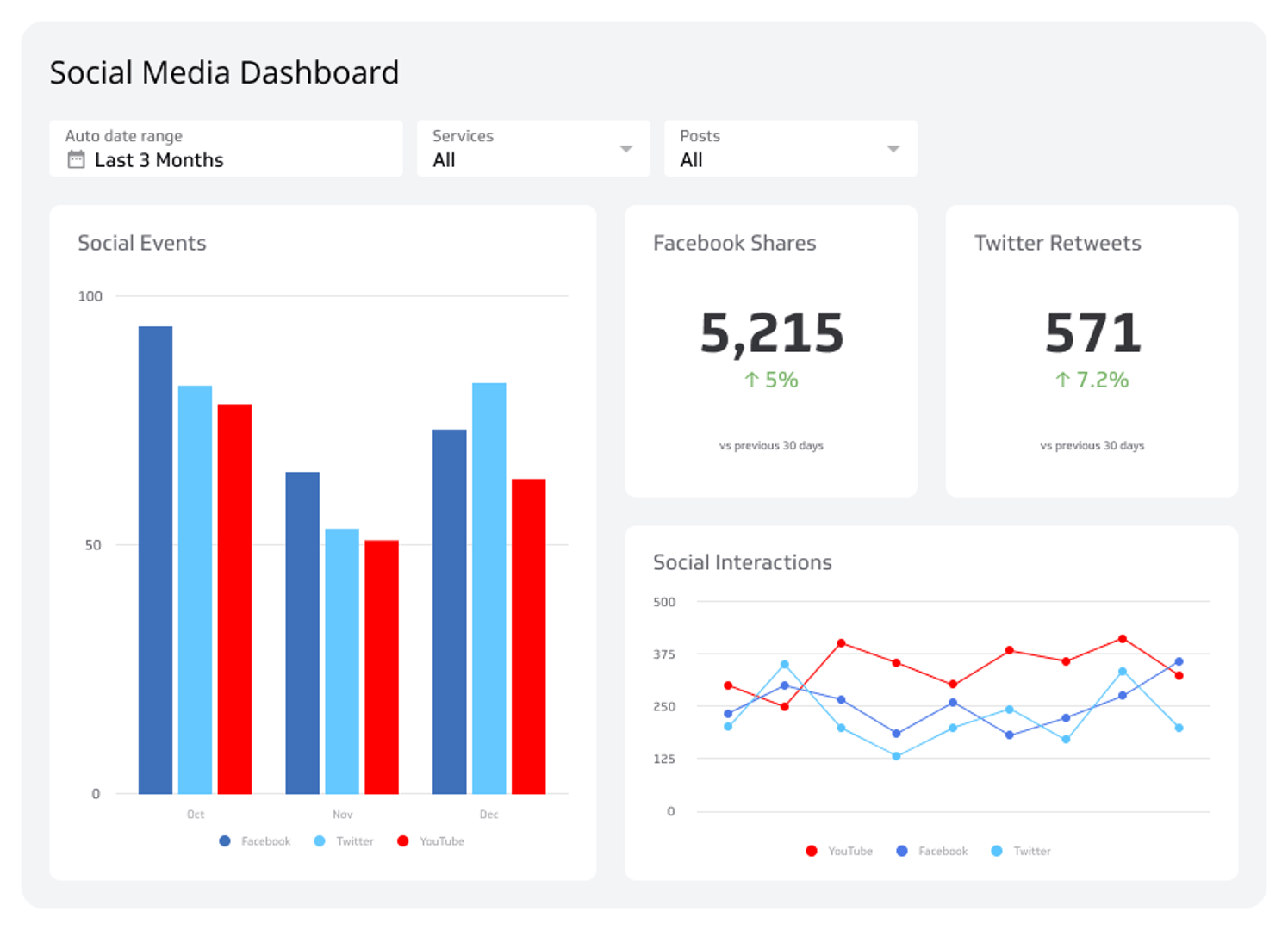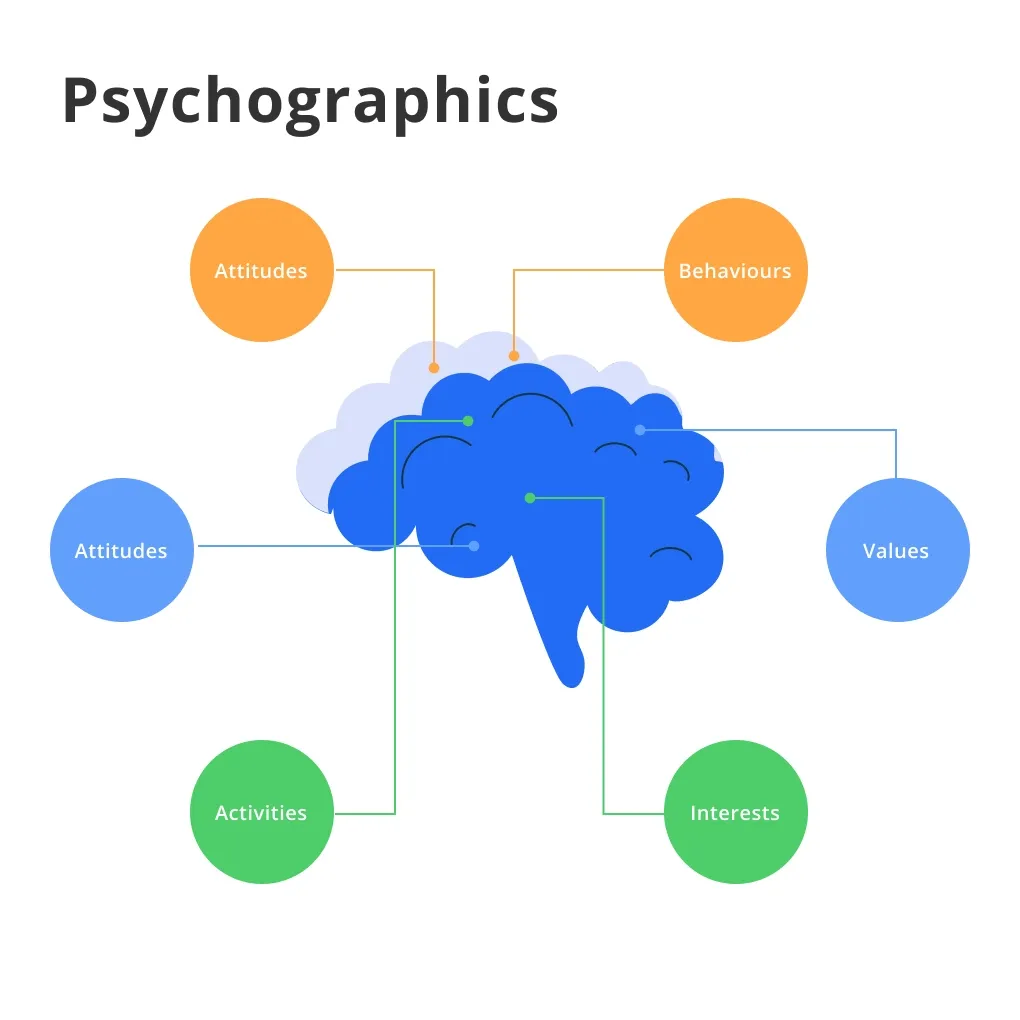What are Psychographics?
Understanding people goes beyond just knowing their age or where they live. Psychographics dives deeper into the 'why' - why do people behave the way they do?
Definition
Simply put, psychographics represents the study of people based on their psychological attributes, including their attitudes, aspirations, and other psychological criteria.
Components
Psychographics breaks down into several components including interests, activities, opinions, values, and lifestyles. These factors give a rounded view of an individual's inner world.
Importance in Marketing
In marketing, understanding psychographics is crucial. It helps brands craft messages that resonate on a personal level with their audience, improving engagement and loyalty.
Data Collection Methods
How do we gather psychographic data? Surveys, social media analytics, and in-depth interviews are among the primary methods used to understand an individual's psychographics.
Application Areas
Beyond marketing, psychographics finds application in politics for understanding voter segments, in product design, and in UX/UI design to create user-centric products and experiences.
Why is Psychographics Important?
Psychographics offers a dimensional approach to understanding people, moving beyond superficial attributes to grasp the core of consumer behavior.
- Personalized Marketing: One word - personalization. With psychographics, marketers can tailor their messaging to fit the unique preferences of their audience segments.
- Better Segmentation: Segmentation based on psychographics allows for more precise targeting, as it clusters audiences based on deeper psychological drivers rather than just demographic information.
- Product Development: For product developers, psychographics provides insights into the needs and desires of potential users, leading to more user-friendly innovations.
- Customer Retention: Understanding the values and lifestyles of customers can aid in crafting experiences that keep them coming back for more.
- Enhancing User Experience: In User Experience (UX) design, psychographics helps in creating interfaces that truly resonate with the user’s inner motivations and preferences
Who Uses Psychographics?

Let's look at who really dives into psychographics and why it's a goldmine for them.
- Marketers: Marketers are the top users, employing psychographics to fine-tune their strategies and capture the audience's heart.
- Political Campaigners: Political campaigners use psychographics to understand voter segments, tailoring messages that resonate with different groups.
- Product Designers: Designers integrate psychographic insights to ensure their products meet the deeper needs and desires of their target audience.
- UX/UI Designers: By understanding the psychological underpinning of their users, UX/UI designers can create more intuitive and satisfying digital experiences.
- HR Professionals: Yes, even HR professionals use psychographics to understand organizational culture and improve employee engagement and productivity.
When to Use Psychographics?
Timing is everything, especially when it comes to deploying psychographics in your strategy.
Before Product Launch
Understanding the psychographic profile of your target audience can help in shaping the product to better meet their needs.
During Marketing Strategy Development
Integrating psychographic insights while crafting your marketing strategy can lead to more impactful and resonant campaigns.
When Entering a New Market
Entering a new market demands an understanding of the local culture and values, which psychographics can provide.
In Content Creation
For content creators, knowing the psychographics of your audience means creating content that strikes a chord and fosters engagement.
In Crisis Management
In times of crisis, understanding the public's psychological stance can aid in crafting messages that empathize and resonate, aiding in reputation management.
Where can Psychographics be Applied?

Psychographics finds its application across a variety of fields and industries, proving its versatility.
- Advertising: From traditional media to digital platforms, advertisers use psychographics to craft messages that speak directly to the consumer's psyche.
- Political Campaigns: Campaign strategists segment voters based on psychographics to tailor messages that appeal to different groups' values and beliefs.
- Healthcare: Healthcare providers and wellness brands leverage psychographics to understand patient or consumer behavior, leading to better health outcomes and customer satisfaction.
- Education: Educational programs and products are tailored using psychographic insights to match different learning styles and motivations.
- E-commerce: Online retailers and e-commerce platforms use psychographics to personalize the shopping experience, recommending products that reflect the shopper's lifestyle and preferences.
How to Collect Psychographic Data?
The collection of accurate psychographic data is crucial for its application. Let's look into the methods.
Surveys and Questionnaires
Not a fan of guesswork? Surveys can help you directly ask your audience about their interests, values, and lifestyles.
Social Media Analytics

Social media platforms are where people express themselves. Analytics can uncover valuable psychographic data from these expressions.
In-depth Interviews
One-on-one conversations can reveal deep insights into an individual's psychological makeup, providing rich psychographic data.
Behavioral Analysis
Observing how individuals interact with products or content online can offer clues to their psychographic profiles.
Psychographic Segmentation Tools
Specialized tools and software help in analyzing large datasets to unearth psychographic profiles across vast audiences.
Best Practices in Using Psychographics

Make the most of psychographics with these best practices.
- Ethical Consideration: Always consider the ethical implications when collecting and using psychographic data. Respect privacy and consent.
- Continuous Update: People change, and so do their psychographics. Regularly update your data to keep your strategies relevant.
- Integration with Other Data: Combine psychographics with demographic and behavioral data for a multi-dimensional approach to understanding your audience.
- Avoid Stereotyping: While psychographics can offer deep insights, avoid pigeonholing individuals based on broad segments. Tailor experiences but respect individuality.
- Test and Learn: Always be testing. Use A/B testing to refine your approach based on psychographic insights, learning what resonates best with each segment.
Challenges in Psychographics
Like any method, psychographics comes with its set of challenges.
- Data Privacy Issues: The collection and use of psychographic data raise privacy concerns, requiring careful navigation and compliance with data protection regulations.
- Interpretation of Data: Transforming raw psychographic data into actionable insights can be complex and requires nuanced interpretation.
- Integration with Other Marketing Tools: Merging psychographic insights with existing marketing tools and strategies can sometimes be challenging, requiring a careful balance.
- Cost and Resources: Obtaining high-quality psychographic data can be resource-intensive, involving detailed surveys, analysis, and expert interpretation.
- Cultural Sensitivity: When applying psychographics, especially in diverse markets like India, it's crucial to contextualize your insights culturally to avoid misinterpretation.
Trends in Psychographics
Staying ahead means keeping an eye on the evolving trends in the world of psychographics.
- AI and Machine Learning: Artificial Intelligence and Machine Learning are revolutionizing how psychographic data is collected and analyzed, offering deeper insights with less effort.
- Increased Focus on Privacy: With heightened awareness around data privacy, there's a trend towards more ethical and transparent collection and use of psychographic data.
- Integration with Big Data: Combining psychographic insights with big data offers a holistic view of the audience, enabling hyper-personalized strategies.
- Use in Employee Engagement: Businesses are increasingly applying psychographics internally to better understand their employees and foster a productive work environment.
- Expansion beyond Marketing: Psychographics is finding applications beyond marketing – in product design, customer service, and user experience, indicating its versatility and value.
Frequently Asked Questions (FAQs)
How does Psychographics Complement Demographics in Marketing?
While demographics describe "who" your customers are, psychographics provide insights into "why" they buy— their personality traits, values, attitudes, interests, and lifestyles. This gives a more holistic view of your customers.
What are some common Psychographic Variables?
Common variables include lifestyle preferences, personality types, attitudes, values, hobbies, and emotional responses. These offer deep insights into consumer behavior.
How can Marketers collect Psychographic Data?
Psychographic data can be collected through various methods like surveys, social media analysis, focus groups, and customer feedback to understand customers' preferences and motivations.
Is Psychographic Segmentation useful in Content Marketing?
Absolutely. Understanding psychographics helps tailor content that resonates with your audience's interests, attitudes, and beliefs, enhancing engagement and conversion rates.
Can Psychographics enhance personalization strategies?
Yes, with their deep insights into customers' mindsets, psychographics can drive highly personalized marketing strategies that deliver relevant, resonant messaging to different customer groups.

